‘Yeah bro, I’m going to take out my hybrid rocker, super playful in the light pow, twintip to carve switch with ease and a solid camber to give me flex when boosting kickers’.
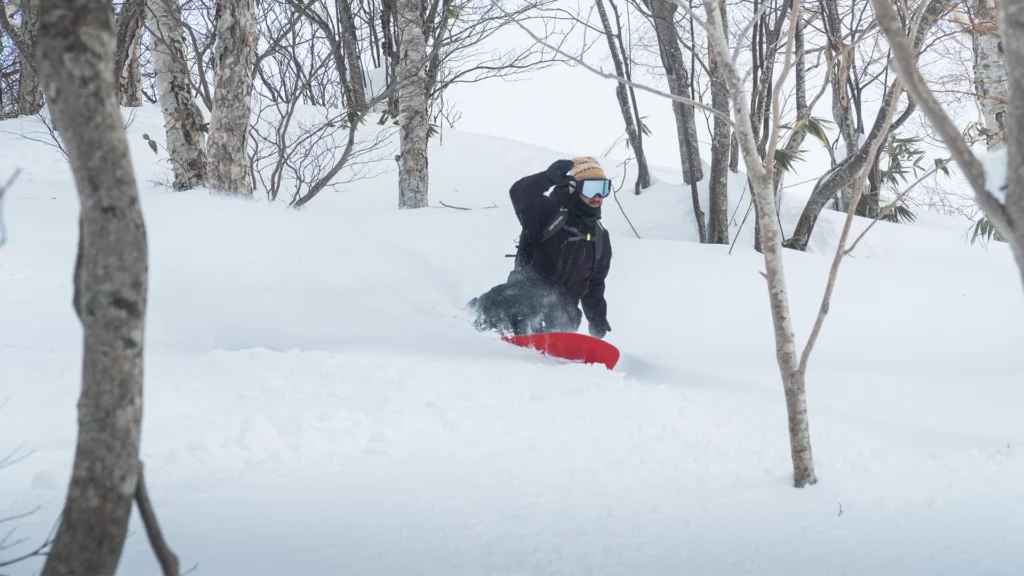
Wait, what?
Don’t worry, when it comes to explaining the difference between snowboard profiles, we’re all in the same boat – the confused boat. What’s the difference, how will it affect your riding, does it matter? All questions we encounter first time buyers questioning before choosing their weapon of choice.
And we have all those juicy answers that you’re seeking–so first things first, what is camber?
Short On Time? Skip Ahead Here:
What Is Snowboard Camber?
Essentially, it’s the shape of your board when you look at it side on. Sometimes the camber might be hard to distinguish, other times you can’t help but not notice, but if you look at your board side on, you’ll notice it’s not quite flat.
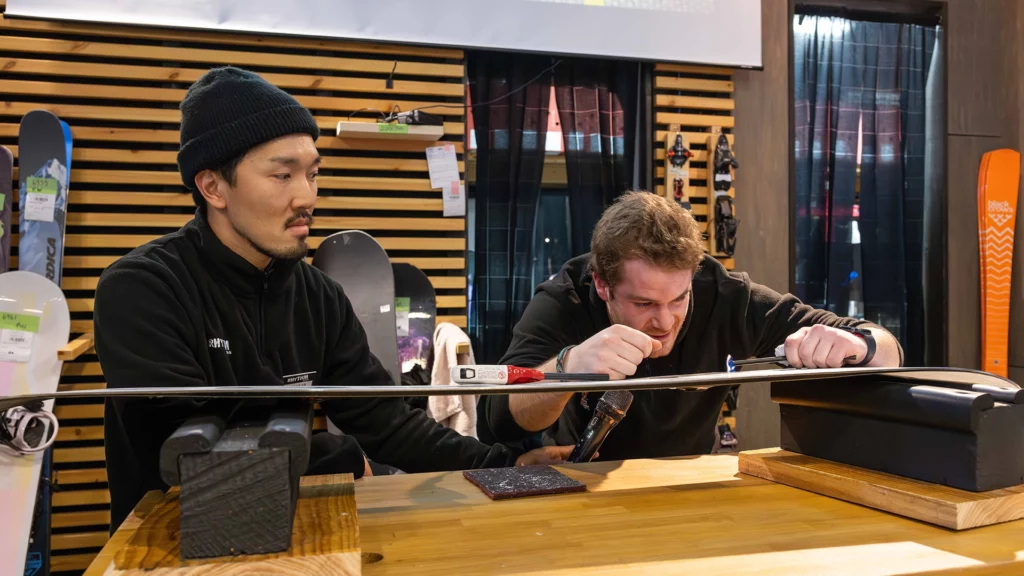
And no, we aren’t talking about the nose and tail which obviously pop up, we’re talking about the actual base of the board. As we said, sometimes it can be hard to tell, instead of looking completely flat and symmetrical, but if you put a marble on your board, it’s hard not to notice.
Ok, Got It – What Other Handy Lingo Should I Know?
Camber: The arch in the middle of your board
Rocker: The dip in the board (essentially the opposite of camber)
Sidecut: The Curve of the snowboards sidewall
Stiffness: The overall flexibility of the board
Waist Width: The width of the middle section of the board
Types of Snowboard Camber
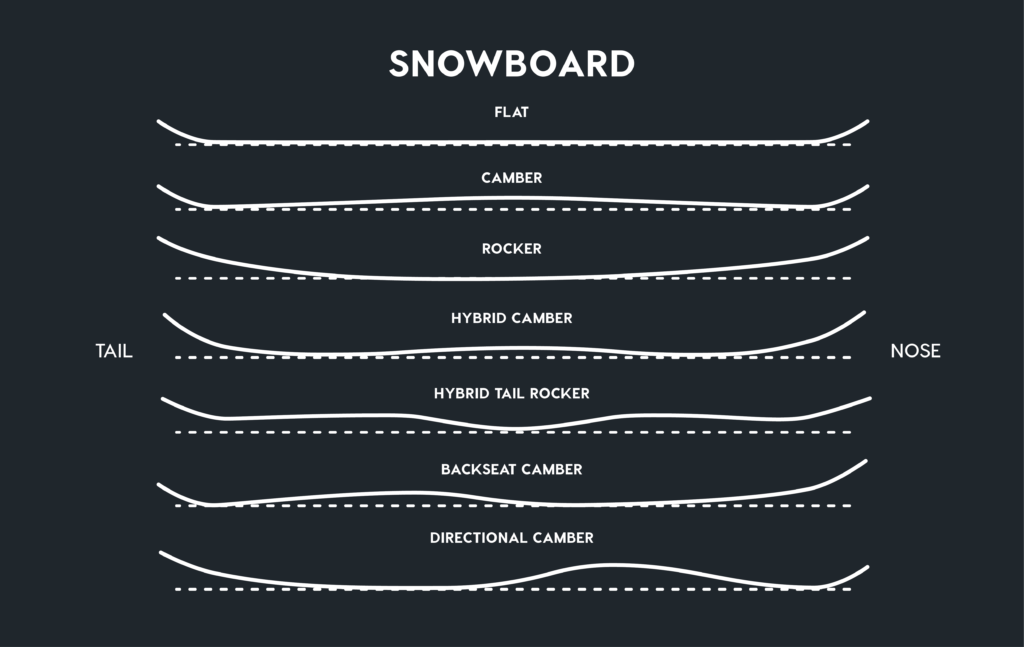
Traditional Camber
Snowboarding has come alllllloooooonnnngggggg way over the past 50 years. But once upon a time, more or less every new whip being manufactured fit the one standard snowboard mould.
Cue, the traditional camber. Essentially traditional camber involves a camber that runs from the tip to the tail –similiar to a very subtle bellcurve.
Best For: Carving
Pros
+ Provides solid pop making it easier to jump and do ollies
+ Provides improved edge hold
+ Maintains stability at high speeds
Cons
– Easier for beginners to catch an edge
– Harder to butter/press
– Heavier and provides less float in deep powder
Camber with Front Rocker
Want to plow through pow like it’s absolutely nothing – like it’s powder– a camber with a front rocker will be your best bet.
Best For: Freeriding
Pros
+ Extra manoeuvrability in deep pow
+ Enhanced edge grip on groomed runs
+ Agile in busy treelines
Cons
– Less pop
– Harder to butter/press
– Harder for beginners to manoeuvre
Camber With Front and Tail Rocker
Better edge control, added floatation in deep pow and easier to release out of turns? A board with both front and tail rocker is an awesome option for those looking for a more playful ride.
Best For: Freeriding, Powder
Pros
+ Easier turning capabilities
+ Enhanced edge control
+ Better Floatation in Pow
Cons
– Perfect for an all-mountain all rounder, but less specialised when it comes to more specific styles of riding
Continuous Rocker/Reverse Camber
Call it what you want – rocker, reverse camber, anti camber, banana, continuous rocker– it’s up to you. When it comes to Reverse camber, everyone calls it something different (normally a ploy to distinguish models between brands), but fundamentally, continuous rocker/reverse camber will be the term that’ll best help you when visiting your local ski and snowboard store. Although, if you’re looking for an easy to remember term that’ll help you distinguish between board profiles, reverse camber has you covered.
Why? Because it’s literally the reverse of traditional camber. While traditional subtly bends up similar to a mountain, reverse camber drops down – similar to a heavyset person sitting on a thin plank of wood.
Best For: Buttering, Pressing, Carving
Pros
+ Good for beginners due to its turning initiation coming more naturally
+ Less likely to catch an edge
+ Great for butters/presses
+ Floats well in powder
Cons
– Harder to control for beginners due to its looser feel
– Less pop
– Doesn’t hold an edge as well
– Harder to land big airs
Flat Camber
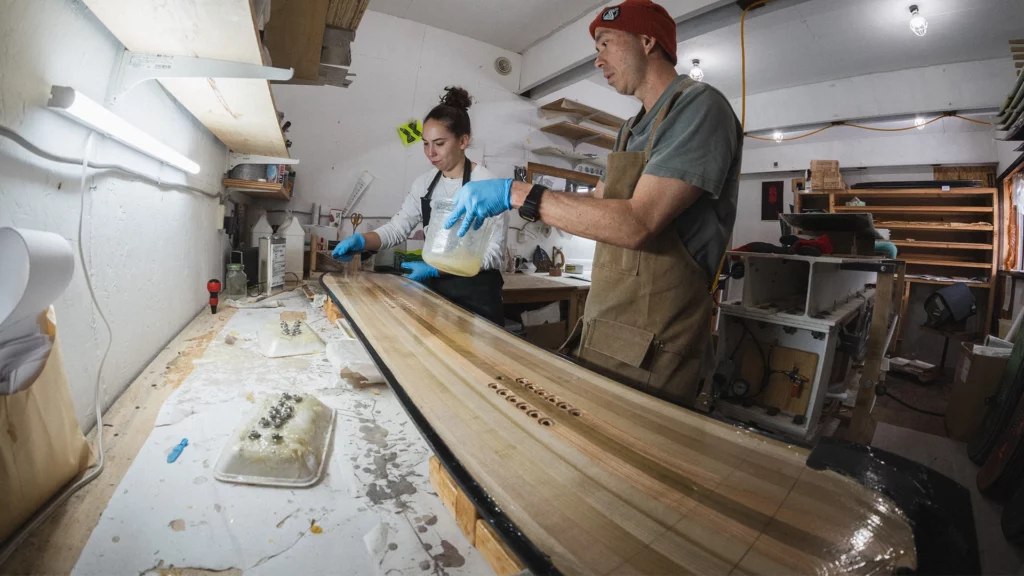
It’s all in the name: A flat camber is flat, it has no camber at all.
Best For: Powder
Pros
+ Provides a more stable ride
+ Better handling
+ Less aggressive than a reverse camber or traditional camber
+ Great for landing big air and hitting jibs
+ Quick from edge to edge and is great for riding trees
Cons
– A slower ride due to its constant contact with the ground
– Easier to catch an edge for beginners
– Harder for beginners to turn
– A more all-rounder, meaning they are not superior in any specific forms of skiing
Hybrid Models
Think of a hybrid’s like building a Sandwich at Subway. No matter what you add to it, it’s still a sandwich, but the variations are dramatically different.
Unsure what we mean?
Most commonly, hybrid profiles are combinations of rocker, camber and rocker (hybrid camber), camber/rocker/camber (hybrid rocker) and rocker/flat/rocker (flat-to-rocker).
Types of Hybrid Profiles
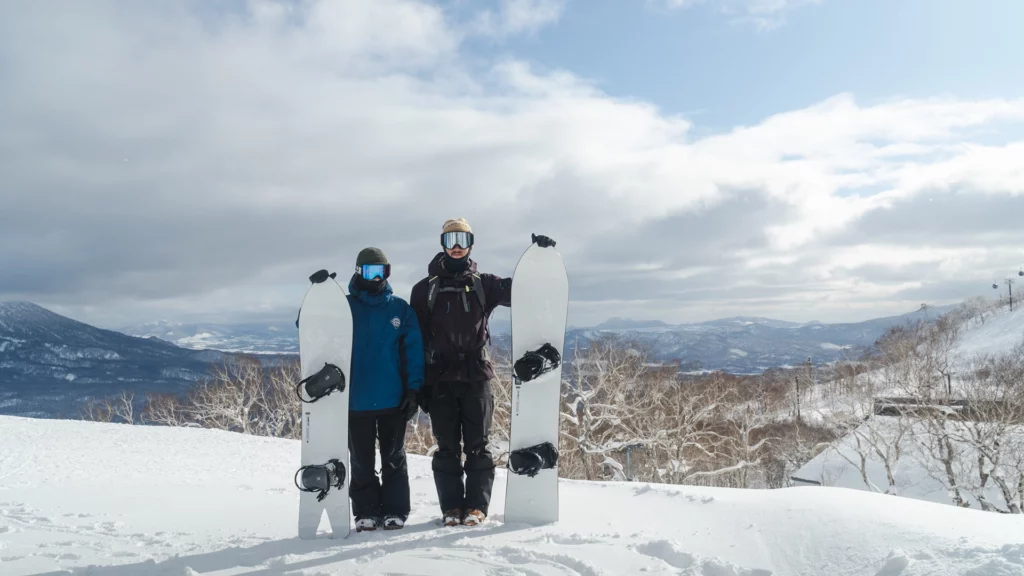
Hybrid Camber (Rocker/Camber/Rocker)
While a ‘hybrid’ snowboard profile, hybrid camber boards are actually super common and are great for turning, floating in powder and providing increased edge control.
Best For: All-mountain
Pros
+ Added stability, pop and speed
+ Increased edge control
+ Good turn initiation and flat in powder
+ Great for freeriding
Cons
– Often directional, making it harder to ride switch
– Not suitable for beginners
Hybrid Rocker (Camber/Rocker/Camber)
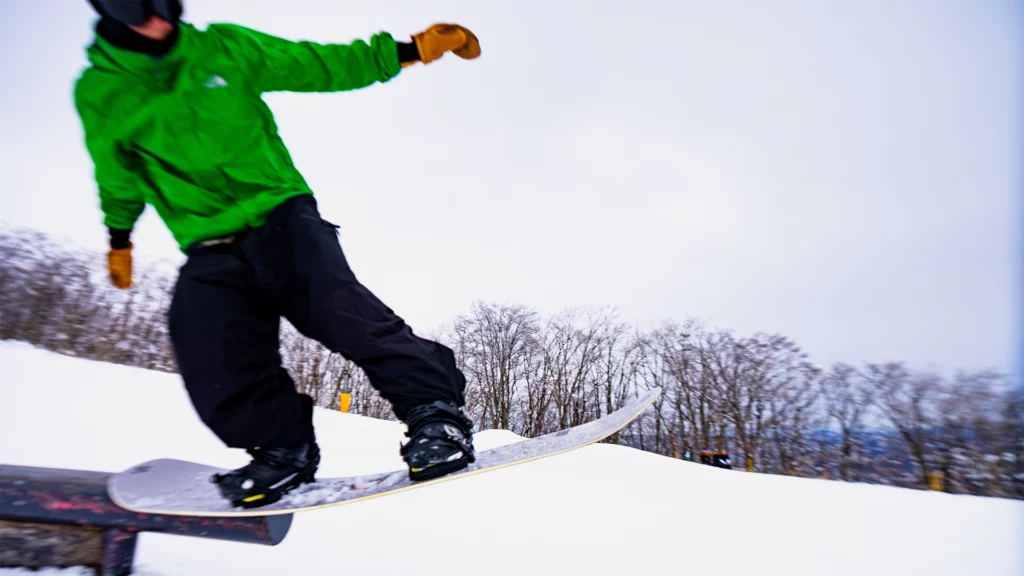
Need a way to remember Hybrid Rocker? Think of it like an evil-villain mustache in a cartoon movie. With a squiggly shape (commonly called the ‘w’ camber) that rarely sits flat at all, hybrid rockers are an awesome choice for those looking for added pop, a looser feel and good float in powder.
Best For: Freestyle
Pros
+ Better float in powder
+ Increased pop
+ Great for park and buttering
+ Quick edge-to-edge
Cons
– Slightly looser feel makes it harder for beginners to navigate
– More refined models suitable for specific purposes, making it harder to use as an all-mountain all rounder
Directional Camber
If you’re looking for an all-rounder that’ll help you with almost ever style of riding other than riding switch, a directional camber is the one for you.
Best For: Freeriding and all-mountain
Pros
+ Better float in powder
+ Easy to pop
+ Great edge hold
Cons
– Not for beginner riders
– Cannot ride switch
Types of Snowboard Shapes
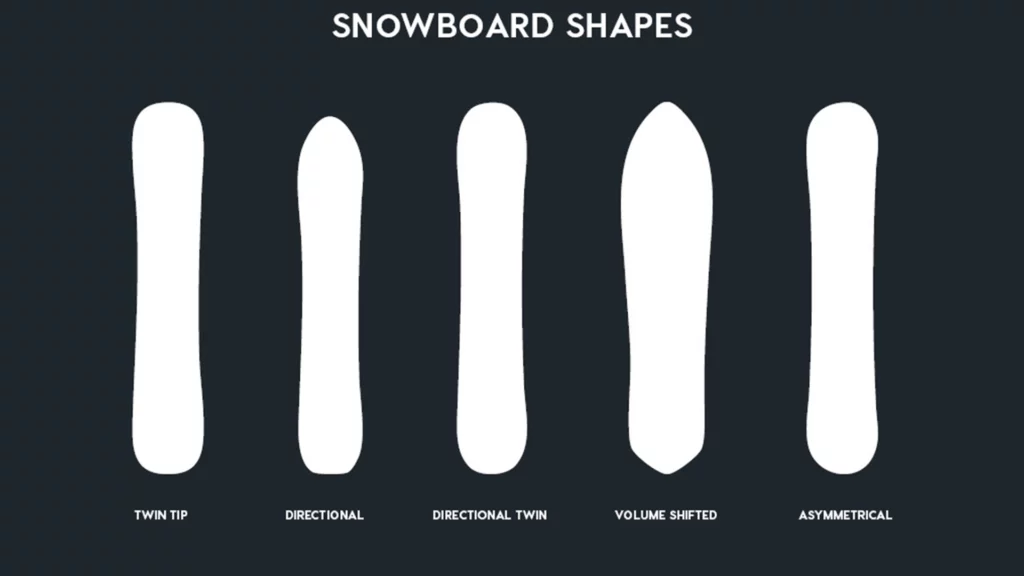
Twin Tip
One of the most popular snowboard shapes worldwide, think of twin tips as a perfectly symmetrical tip and tail.
Best For: All-mountain, beginners, switch riders
Directional
More often than not, if you’re riding a powder board, you’ll be riding a directional board. Often equipped with a stiffer tailor and a wider and softer nose to help you stay afloat in deep terrain, directional boards are an awesome option for all pow-chasers out there.
Best For: Powder
Directional Twin
Yes, we understand the contradiction of having a directional twin, but these boards combine the best elements of both twin and directional boards, giving you a symmetrical shape with a directional core (softer tip than tail).
Best For: All-mountain, Freestyle
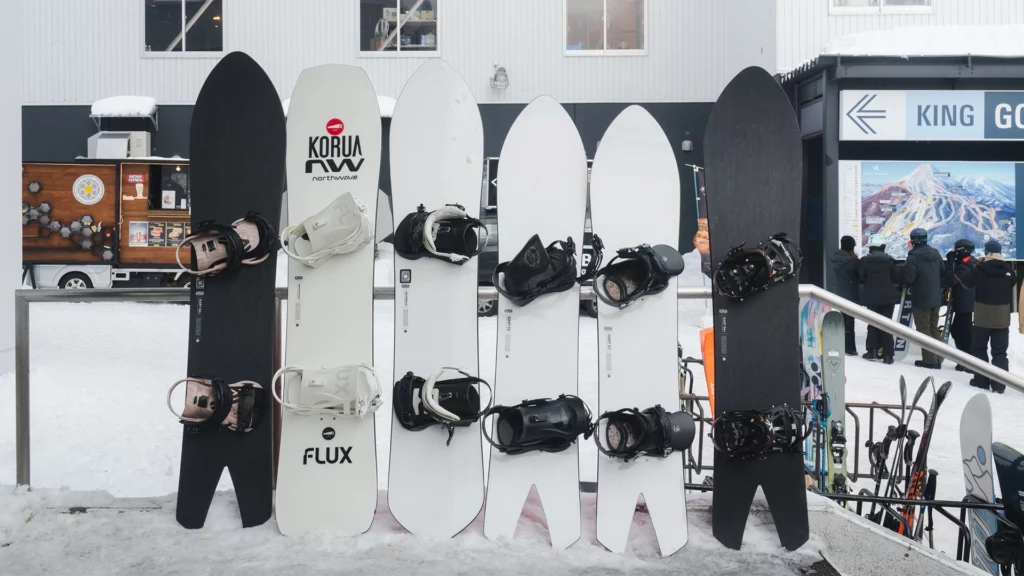
Volume Shifted
If you’ve ever looked at a board and thought, ‘what’s the benefit of that shape’, it was most likely a Volume Shifted board. Easily identifiable by their short and wide profile, Volume Shifted boards allow you to push all your weight to the back of the board, keeping your tip elevated in deep powder expeditions.
Best For: Powder, Backcountry
Asymmetrical
Our bodies aren’t perfectly symmetrical, so why would our snowboards be? Asymmetrical decks normally offer up a shorter heel side and longer toe side sidecuts, making riding a lot easier!
Best For: All Mountain
Got the lingo locked in and now you want to get yourself that new setup you’ve been eyeing off? Why not take advantage of our ‘try before you buy’ offer and take them out for a spin before you lock in the purchase!


